9 guitar tricks you can learn from the Foo Fighters
Layering guitars, powerchords, droning melodies – it's time to learn what makes Dave Grohl and co sound so massive

Musically speaking, you could say Foo Fighters are underrated. Yeah, we know the band is a world-famous rock behemoth, and no-one’s going to make a case for great virtuosity, but we’d argue that the band’s trademark layered chords, arpeggios and hard riffing style are greater than the sum of its parts.
There’s certainly plenty to learn from the way those multiple parts lock together. It’s clever stuff, and interesting for anyone thinking about arranging parts for two or three guitarists – which is what we’re looking at in this lesson.
If there’s a general principle, it’s to complement and contrast. So, if one guitar plays, say, an arpeggio, the other guitar could add powerchords, or target another pitch/area of the fretboard. Hopefully our lessons will inspire you to explore some textural playing, Foos-style.
1. Arpeggios and powerchords (Guitar One)
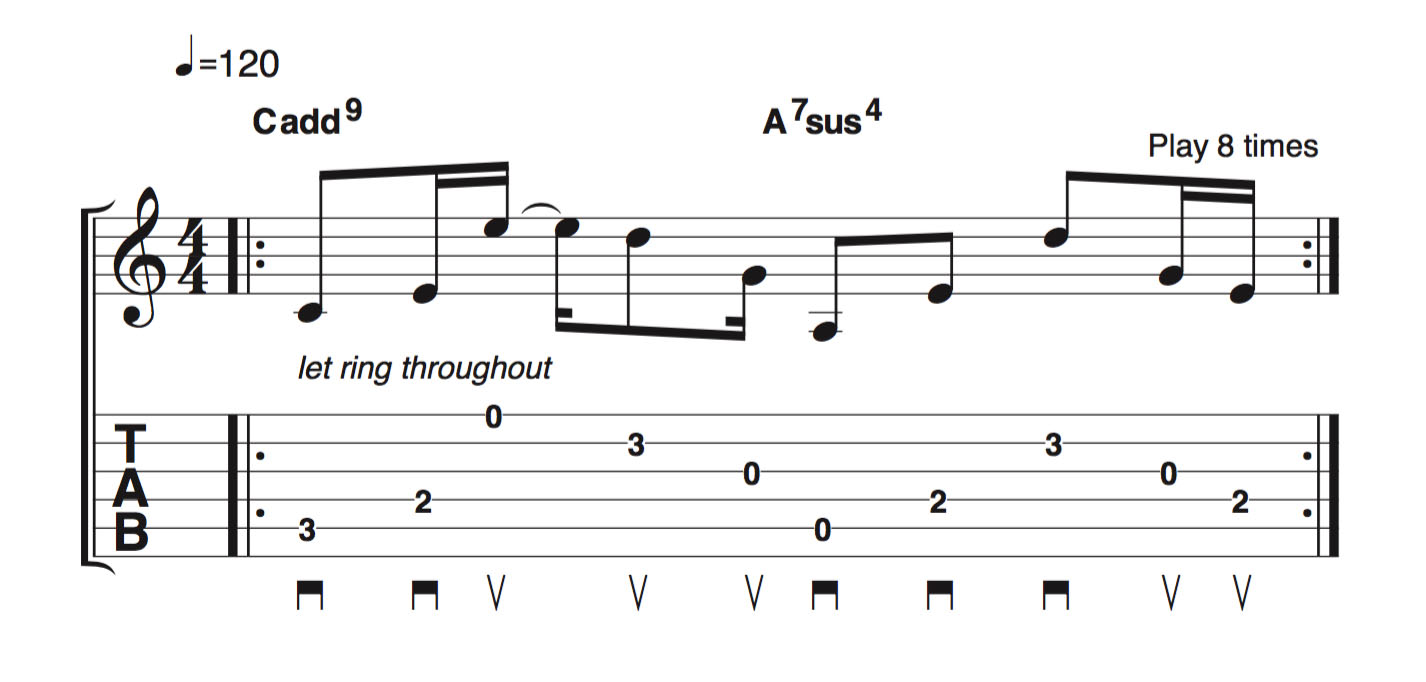
These add9 and 7sus4 chords will give you a typically Foos-style flavour, and the warm but cutting light overdrive tone is authentic too. Just let all the strings ring together.
2. Arpeggios and powerchords (Guitar Two)
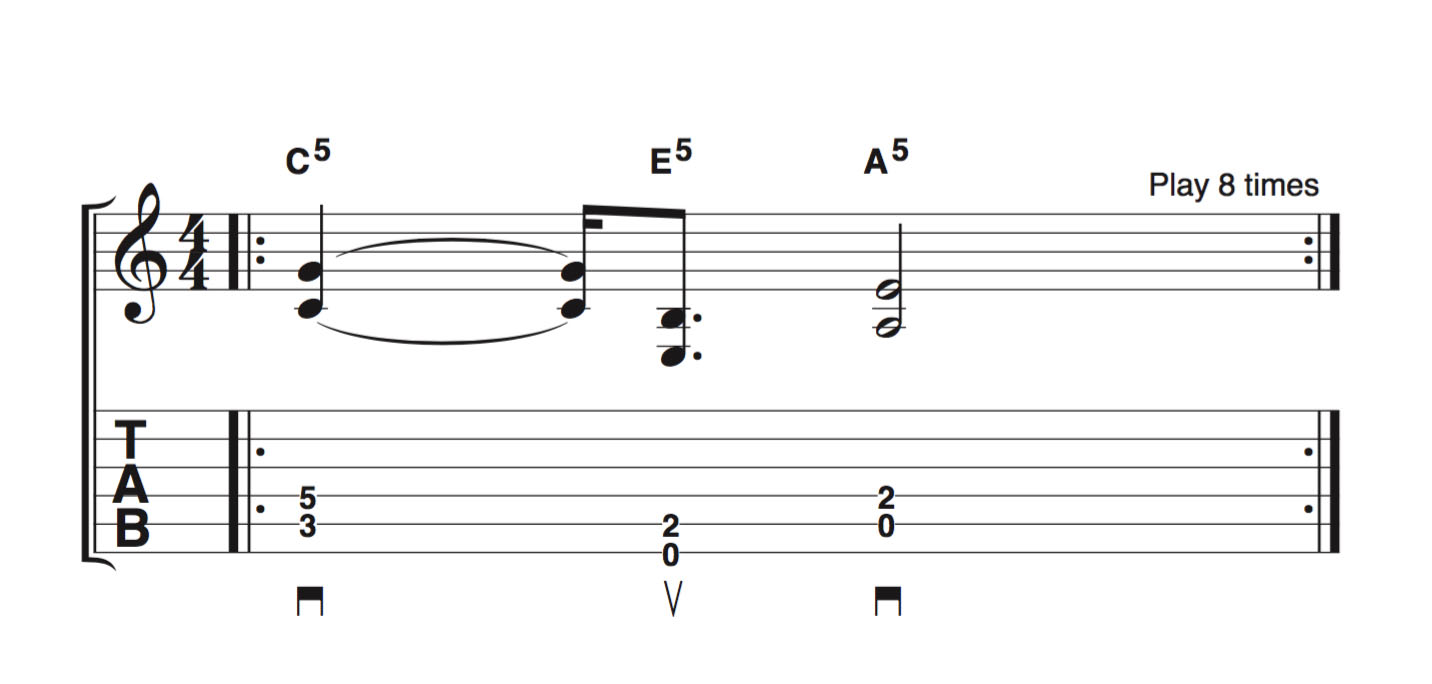
This part supports the more intricate guitar 1 with some contrasting, simpler powerchords. If you’re taking frontman/woman duties, it’s often best to take on a simpler guitar part like this.
3. Punky riffing (Guitar One)
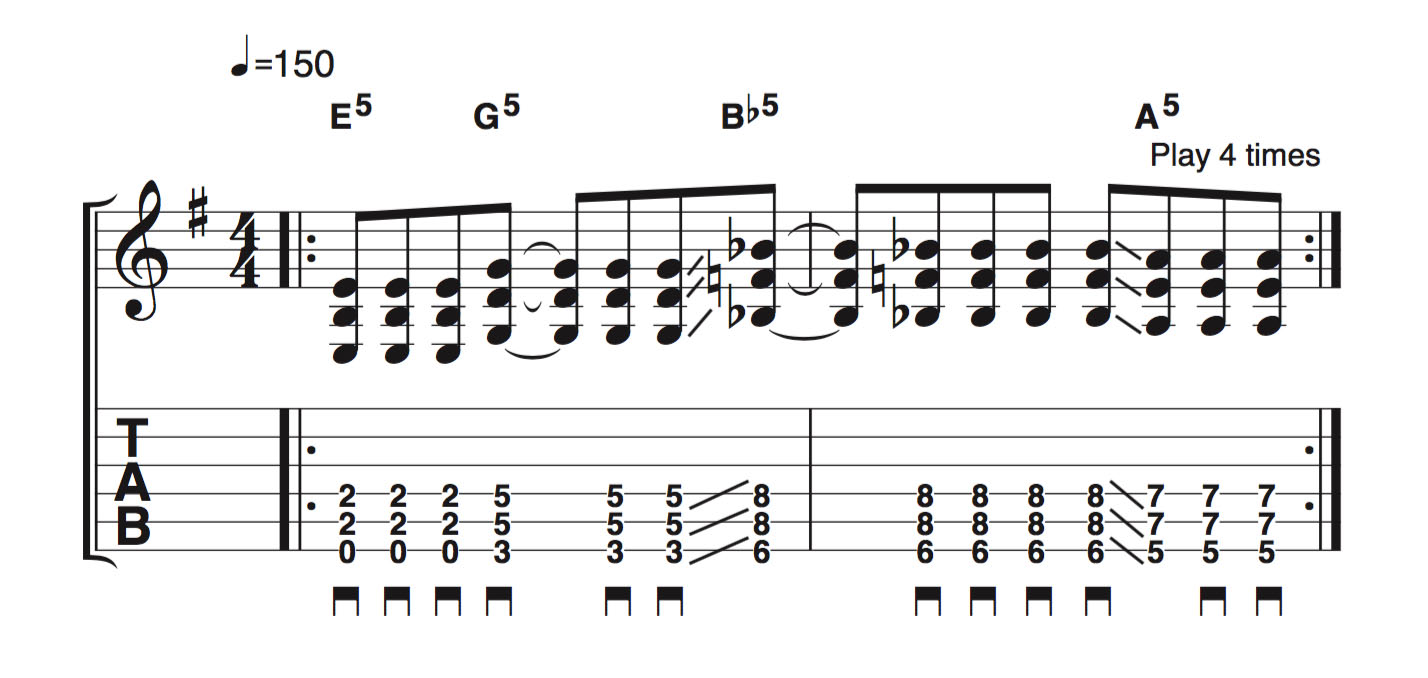
Play these punky powerchords with downstrokes to maintain a consistent sounding attack. Try to avoid tension in your arm though, moving from your wrist and not your elbow.
4. Punky riffing (Guitar Two)
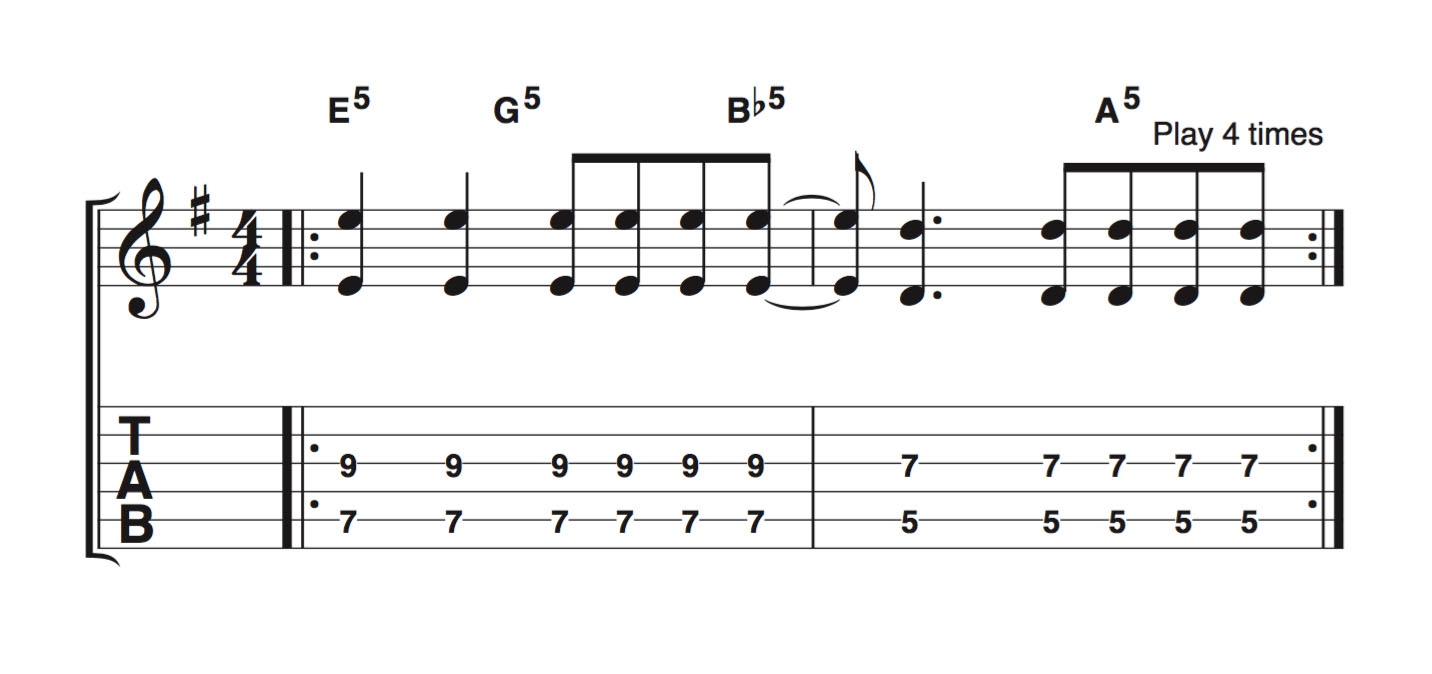
These octaves give focus to the powerchords you just played. There’s not much movement in the octaves, with those fast-changing chords providing the interesting harmonic backdrop.
5. Timings Like These (Guitar One)
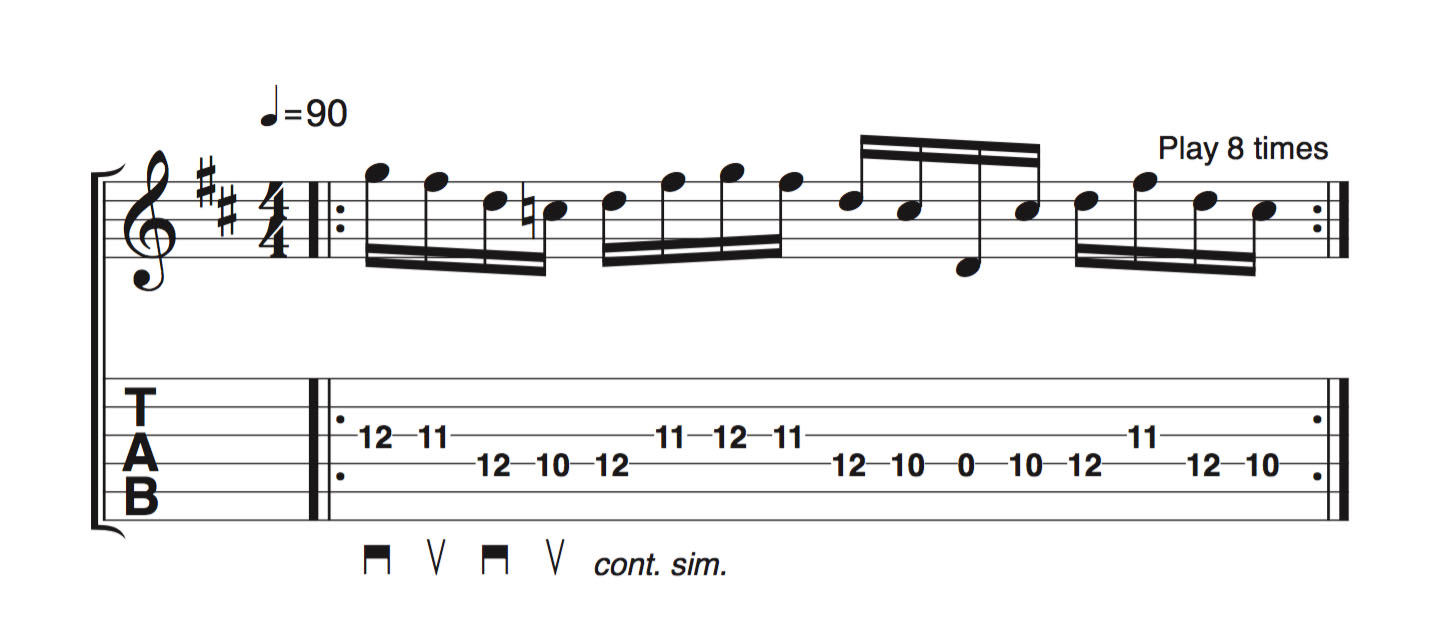
This melodic lick is represented in four groups of four equal-length notes, but, depending on how you feel it, there’s a sense that the melody can be divided into six- and ten-note phrases.
6. Timings Like These (Guitar Two)
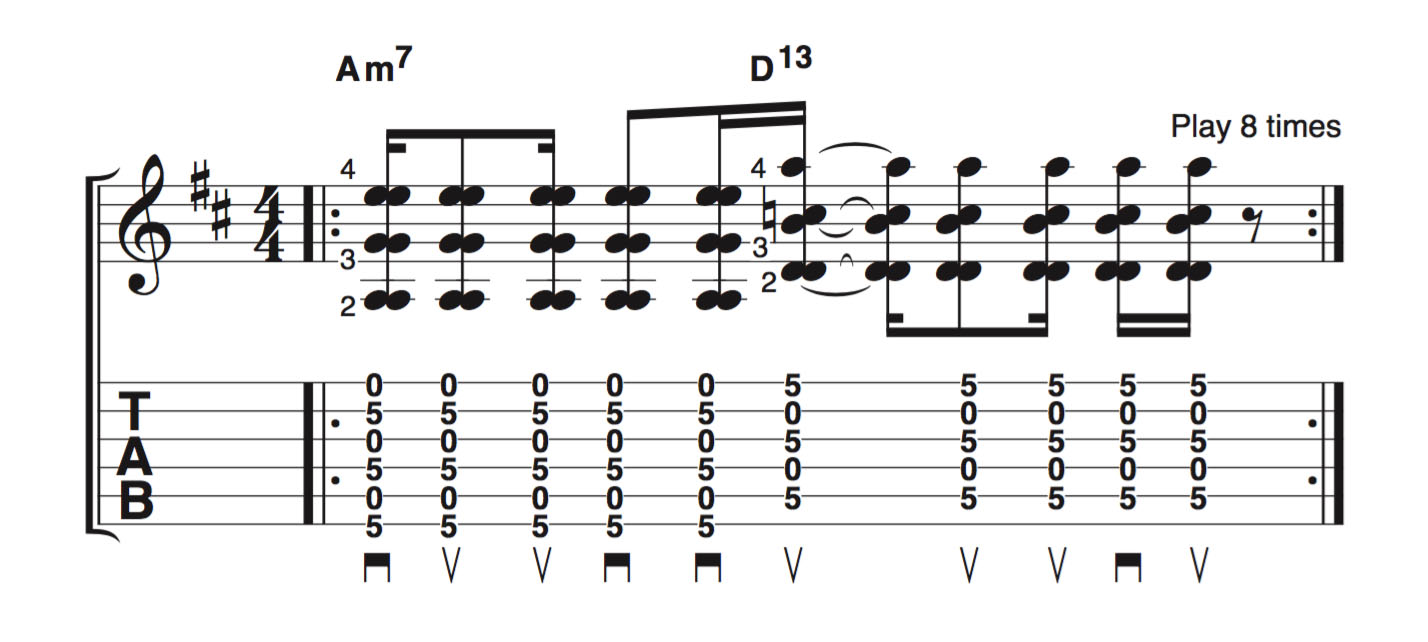
Notice that our chord change comes on the last 16th note of beat 2. This is tricky because it’s between the halfway point of beat 2 and the downbeat of beat 3. Clever!
7. Powerchord variations

Play this White Limo-style riff with a loose strumming hand and move your hand down and up, alternate strumming the lower three strings. There is a mixture of ‘root-5th-root’ powerchords and ‘5th-root-5th’ inversions – a typical Foos trick and two shapes that are easy to switch between.
8. Drone string melodies

This part is reminiscent of Dave’s guitar part in My Hero. We’re using the open first string as an E drone note against which you can play notes from the E major scale. Keep your fretting fingers arched in order to allow the open string to ring freely and play each diad with a downstroke for consistency.
9. Recent funky direction

Inspired by the Foos’ recent track Shame Shame, here we’re looking at how Dave and co use almost funky syncopation and palm-muted single notes. Play the bends with your second and third fingers pushing up on the string, while fretting the second string with your first finger.
Get The Pick Newsletter
All the latest guitar news, interviews, lessons, reviews, deals and more, direct to your inbox!
Total Guitar is one of Europe's biggest guitar magazines. With lessons to suit players of all levels, TG's world-class tuition is friendly, accessible and jargon-free, whether you want to brush up on your technique or improve your music theory knowledge. We also talk to the biggest names in the world of guitar – from interviews with all-time greats like Brian May and Eddie Van Halen to our behind the scenes Rig Tour features, we get you up close with the guitarists that matter to you.










![Joe Bonamassa [left] wears a deep blue suit and polka-dotted shirt and plays his green refin Strat; the late Irish blues legend Rory Gallagher [right] screams and inflicts some punishment on his heavily worn number one Stratocaster.](https://cdn.mos.cms.futurecdn.net/cw28h7UBcTVfTLs7p7eiLe.jpg)
